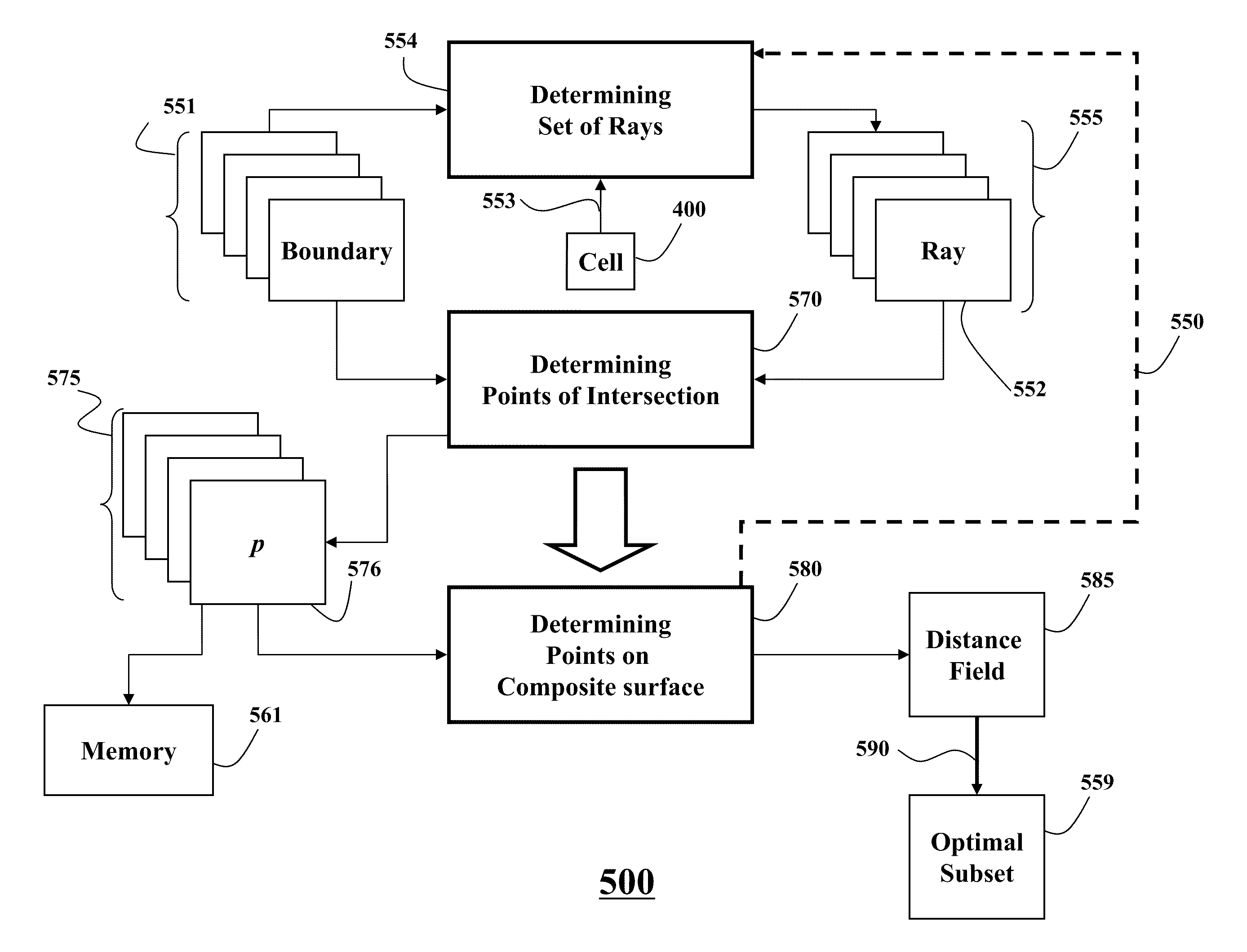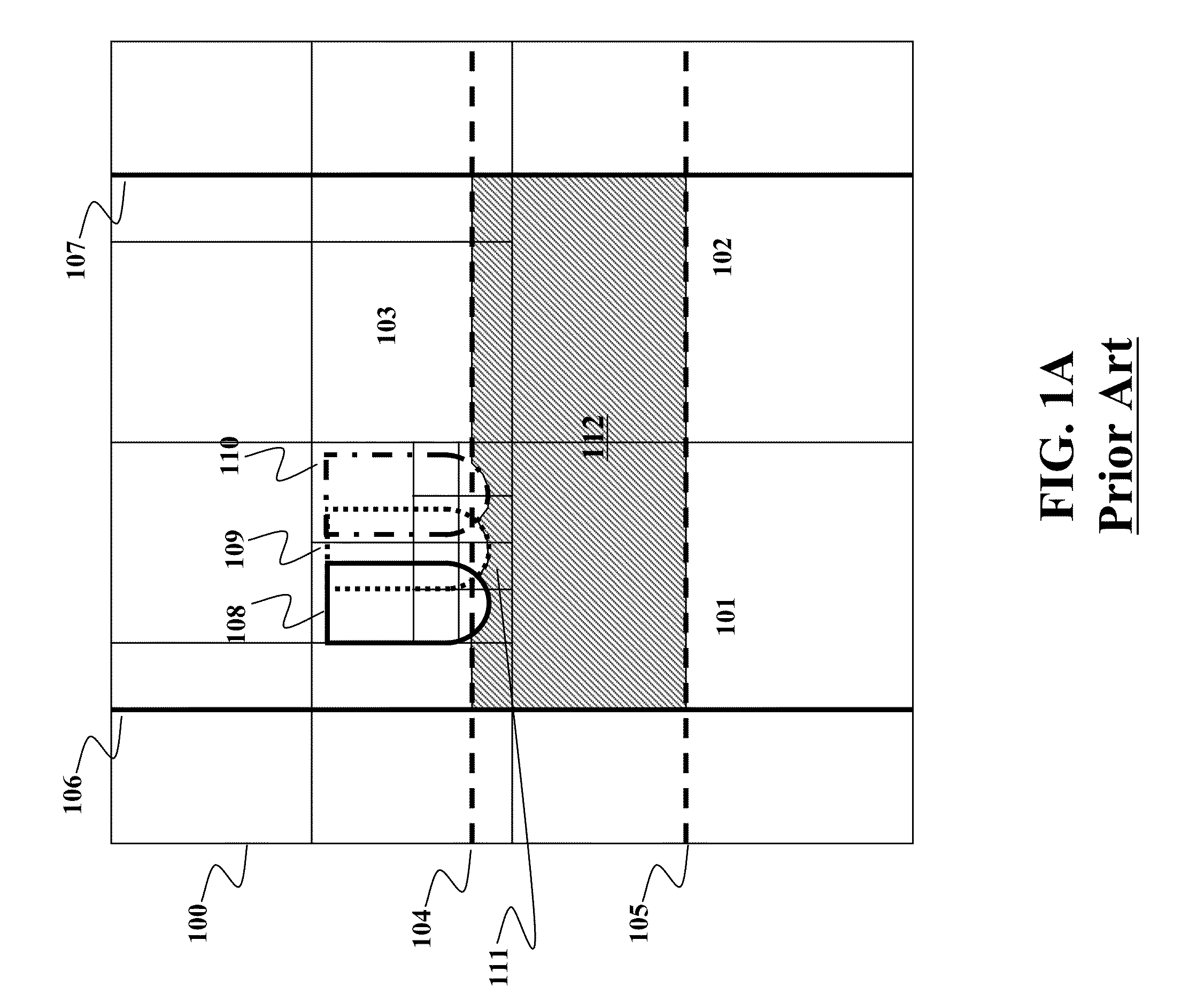System and method for optimizing machining simulation
a technology of simulation and optimization, applied in the field of machining simulation, can solve the problems of small discrepancies between the actual the desired final shape of the workpiece, and the inability of the g-code generated by the computer aided manufacturing system to produce an exact replication of the desired final shape,
- Summary
- Abstract
- Description
- Claims
- Application Information
AI Technical Summary
Benefits of technology
Problems solved by technology
Method used
Image
Examples
Embodiment Construction
[0054]System Overview
[0055]FIG. 4A illustrates a problem addressed by embodiments of the invention. Within a cell 400, a boundary 402 defines an original surface of a workpiece 401 at the start of a simulation of a milling of the workpiece. During the simulation, boundaries of three swept volumes 403, 404, and 405 intersect with the cell. Accordingly, the swept volumes are removed from a volume of the workpiece represented by the cell. A composite surface of the workpiece 406 enclosing an interior 407 of the workpiece is formed by the boundary 402 and the boundary 405.
[0056]In various embodiments of the invention, the workpiece and the swept volumes are represented with distance fields. The cell is associated 450 with a subset 551 of distance fields that initially includes the distance fields representing the boundaries 402-405 intersecting with the cell. Embodiments of the invention optimize 500 the subset forming an optimal subset 559 that includes the distance fields representing...
PUM
 Login to View More
Login to View More Abstract
Description
Claims
Application Information
 Login to View More
Login to View More - R&D
- Intellectual Property
- Life Sciences
- Materials
- Tech Scout
- Unparalleled Data Quality
- Higher Quality Content
- 60% Fewer Hallucinations
Browse by: Latest US Patents, China's latest patents, Technical Efficacy Thesaurus, Application Domain, Technology Topic, Popular Technical Reports.
© 2025 PatSnap. All rights reserved.Legal|Privacy policy|Modern Slavery Act Transparency Statement|Sitemap|About US| Contact US: help@patsnap.com



